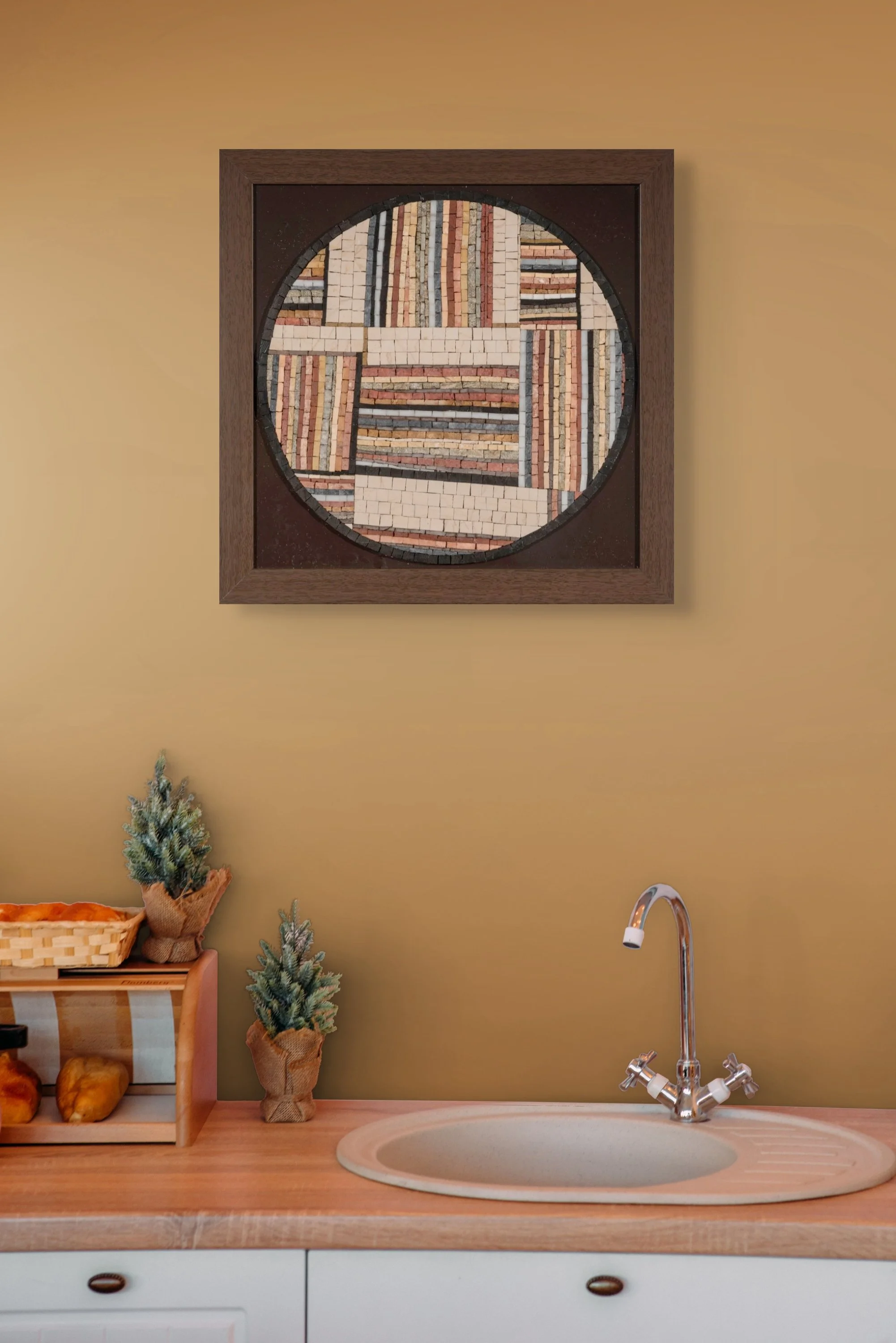Creation
Mosaic‑making has a lineage spanning thousands of years. Early civilizations created stone tapestries to adorn homes, honor culture, and impress guests. Antico Contempo brings this tradition into the modern day, utilizing ancient techniques in both restored and contemporary designs.
Each mosaic begins with research into historic patterns, materials, and techniques to capture their cultural and visual language. We reimagine these compositions for a modern setting while honoring their original spirit. In collaboration with mosaic artists, historians, and designers, we create works that unite antique and contemporary sensibilities, rich with color and emotion.
The process starts with natural stone like marble, granite, limestone, onyx, and travertine—never colored or dyed. Hand‑cut into tesserae, every piece is arranged with patience, artistry, and mastery of ancient craft. After weeks, months, or even years of meticulous craftsmanship, each mosaic is completed with a refined frame, ready for effortless display.











